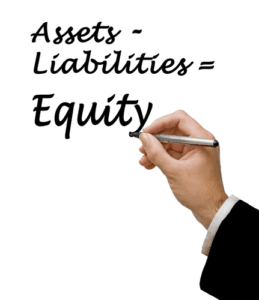
If you dispose of GAA property in a qualifying disposition, you can choose to remove the property from the GAA. A qualifying disposition is one that does not involve all the property, or the last item of property, remaining depreciable assets in a GAA and that is described by any of the following. When you dispose of property included in a GAA, the following rules generally apply. For more information and special rules, see the Instructions for Form 4562.
Accumulated Depreciation, Carrying Value, and Salvage Value

The property cost $39,000 and you elected a $24,000 section 179 deduction. You also made an election under section 168(k)(7) not to deduct the special depreciation allowance for 7-year property placed in service last year. Because you did not place any property in service in the last 3 months of your tax year, you used the half-year convention. You figured your deduction using the percentages in Table A-1 for 7-year property.
Sum-of-the-years depreciation
The dollar amount represents the cumulative total amount of depreciation, depletion, and amortization (DD&A) from the time the assets were acquired. Assets deteriorate in value over time and this is reflected in the balance sheet. Instead of recording an asset’s entire expense when it’s first bought, depreciation distributes the expense over multiple years. Depreciation quantifies the declining value of a business asset, based on its useful life, and balances out the revenue it’s helped to produce.
What is your current financial priority?
- For a disposition at any time during a particular month before the end of the recovery period, no deduction is allowed for the month of disposition.
- It does not matter that the underlying property is depreciated under ACRS or one of the other methods.
- Assets deteriorate in value over time and this is reflected in the balance sheet.
- The numerator (top number) of the fraction is the number of months in the short tax year and the denominator (bottom number) is 12.
- Other basis usually refers to basis that is determined by the way you received the property.
You use the percentages listed under that month for each year of the recovery period. If you buy property, your unadjusted basis is usually its cost minus any amortized amount and minus any section 179 deduction elected. If you acquire property in some other way, such as by inheriting it, getting it as a gift, or building it yourself, you figure your unadjusted basis under other rules. Recovery property under ACRS is tangible depreciable property placed in service after 1980 and before 1987. It generally includes new or used property that you acquired after 1980 and before 1987 for use in your trade or business or for the production of income.
What Can Be Depreciated in Business? Depreciation Decoded
The DB method provides a larger deduction, so you deduct the $192 figured under the 200% DB method. The DB method provides a larger deduction, so you deduct the $320 figured under the 200% DB method. The DB method provides a larger deduction, so you deduct the $200 figured under the 200% DB method. Appendix A contains the MACRS Percentage Table Guide, which is designed to help you locate the correct percentage table to use for depreciating your property. MACRS provides three depreciation methods under GDS and one depreciation method under ADS.

Depreciation Accounting
However, computer software is not a section 197 intangible and can be depreciated, even if acquired in connection with the acquisition of a business, if it meets all of the following tests. If you use part of your home as an office, you may be able to deduct depreciation on that part based on its business use. For information about depreciating your home office, see Pub. If you lease property to someone, you can generally depreciate its cost even if the lessee (the person leasing from you) has agreed to preserve, replace, renew, and maintain the property. You made a down payment to purchase rental property and assumed the previous owner’s mortgage. To claim depreciation, you must usually be the owner of the property.
For a passenger automobile, the total section 179 deduction and depreciation deduction are limited. Divide the balance by the number of years in the useful life. Unless there is a big change in adjusted basis or useful life, this amount will stay the same throughout the time you depreciate the property. Following the IRS guidelines and using the MACRS calculation can help you determine annual depreciation expenses on a rental property.
- To apply the MACRS, the total depreciable basis of the property (excluding the land value) is divided by 27.5.
- Ready and available for a specific use whether in a trade or business, the production of income, a tax-exempt activity, or a personal activity.
- For example, a business telephone call made on a car telephone while commuting to work does not change the character of the trip from commuting to business.
- However, if you completely replace the roof, the new roof is an improvement because it is a restoration of the building.
- Although an adequate record generally must be written, a record of the business use of listed property, such as a computer or automobile, can be prepared in a computer memory device using a logging program.
- Because you’ve taken the time to determine the useful life of your equipment for depreciation purposes, you can make an educated assumption about when the business will need to purchase new equipment.
The Tara Corporation’s first tax year after the short tax year is a full year of 12 months, beginning January 1 and ending December 31. The first recovery year for the 5-year property placed in service during the short tax year extends from August 1 to July 31. Tara deducted 5 months of the first recovery year on its short-year tax return. Seven months of the first recovery year and 5 months of the second recovery year fall within the next tax year. The depreciation for the next tax year is $333, which is the sum of the following.
Example of Depreciable Property
In February 2024, Make & Sell sells the machine that cost $8,200 to an unrelated person for $9,000. You treat property under the mid-quarter convention as placed in service or disposed of on the midpoint of the quarter of the tax year in which it is placed in service or disposed of. Divide a short tax year into 4 quarters and determine the midpoint of each quarter. Under the mid-month convention, you always treat your property as placed in service or disposed of on the midpoint of the month it is placed in service or disposed of. You reduce the adjusted basis ($480) by the depreciation claimed in the third year ($192).

Residential rental property and nonresidential real property are defined earlier under Which Property Class Applies Under GDS. Thus, the amount of any 2023 disallowed section 179 expense deduction attributable to qualified section 179 real property will be reported on line 13 of Form 4562. If you place more than one property in service in a year, you can select the properties for which all or a part of the costs will be carried forward. For this purpose, treat section 179 costs allocated from a partnership or an S corporation as one item of section 179 property. If you do not make a selection, the total carryover will be allocated equally among the properties you elected to expense for the year.